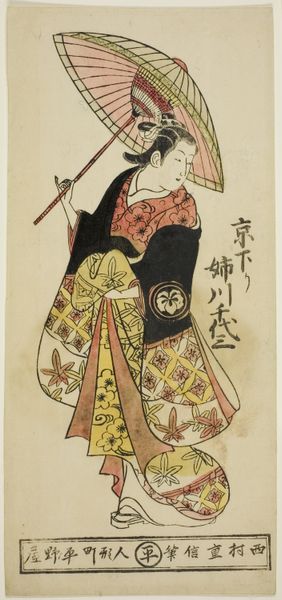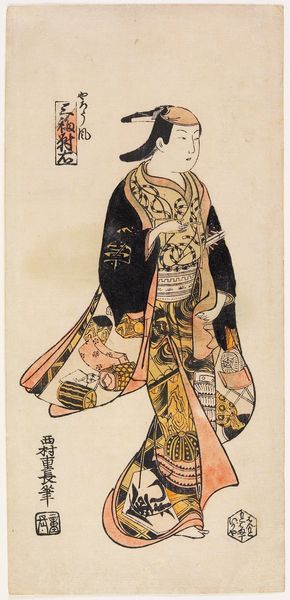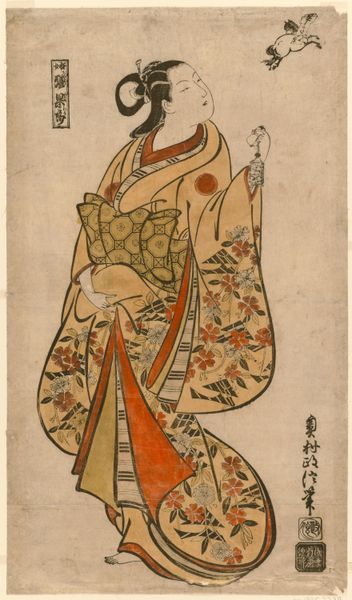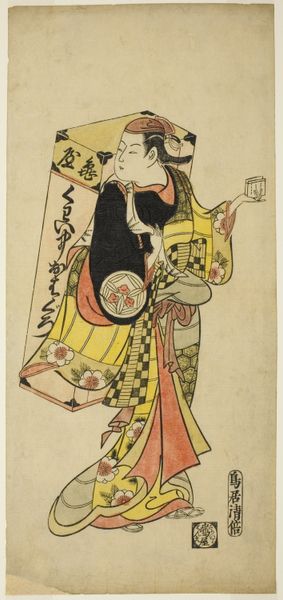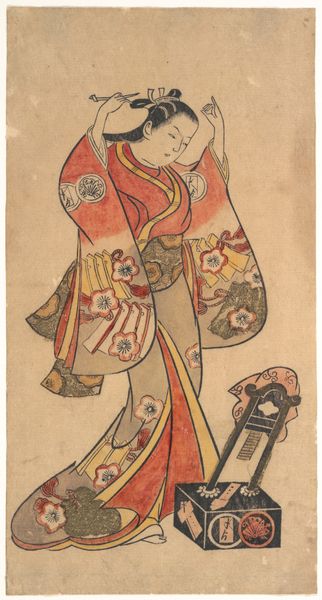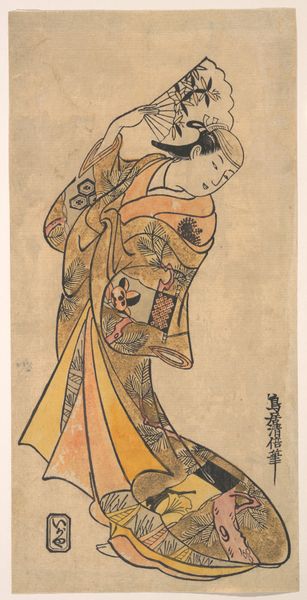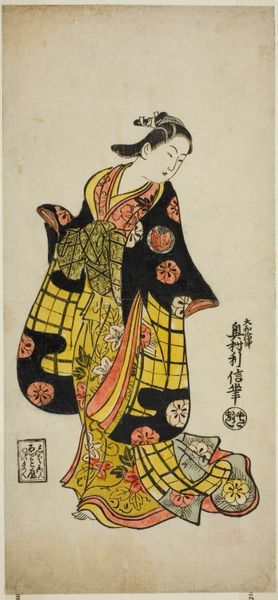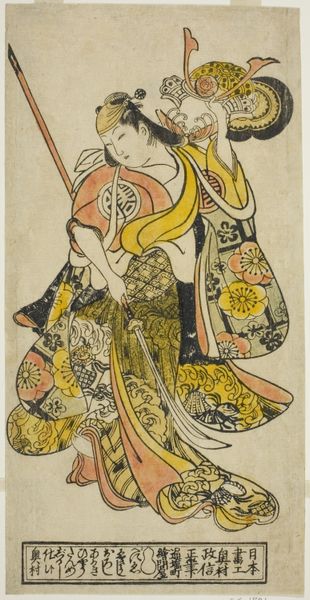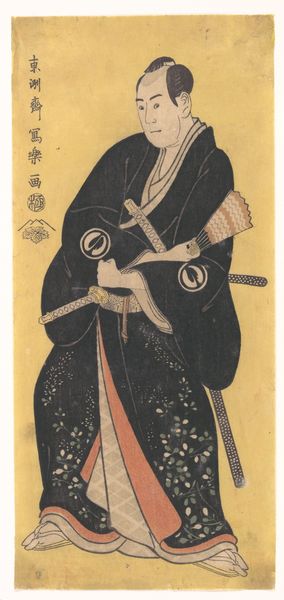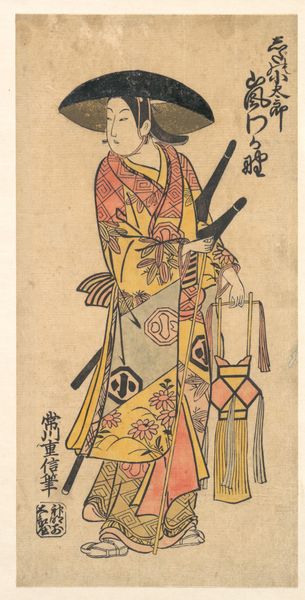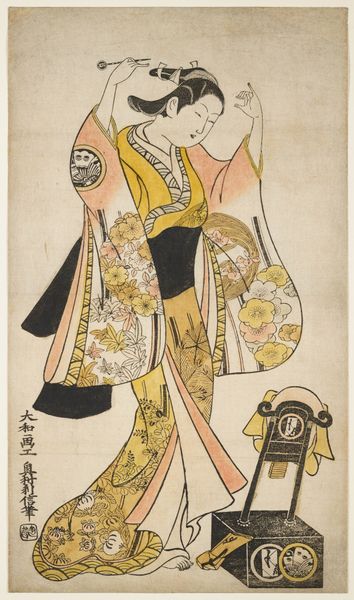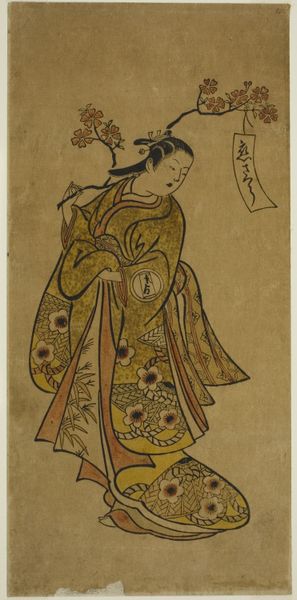
Ogino Isaburo, from "A Triptych of Young Kabuki Actors: Kyoto, Center (Iroko sanpukutsui: Kyo, naka)" c. 1723
0:00
0:00
print, woodblock-print
#
portrait
#
ink drawing
#
ink painting
# print
#
asian-art
#
ukiyo-e
#
figuration
#
woodblock-print
#
genre-painting
Dimensions: 31.7 × 14.9 cm
Copyright: Public Domain
Editor: Here we have Okumura Masanobu's woodblock print, "Ogino Isaburo, from 'A Triptych of Young Kabuki Actors: Kyoto, Center'," dating back to around 1723. The figure almost seems to float on the page. What story does this print tell in its time and ours? Curator: This work provides insight into the socio-cultural context of the Edo period and the popularity of Kabuki theater. Prints like these were essentially early forms of celebrity posters, circulating images of popular actors among the burgeoning urban middle class. Think of it as visual gossip or even fandom. How do you see the Kabuki actor portrayed? Editor: There's a delicacy in the line work, but the robes make him seem quite stately. Was this meant to elevate his status, or just capitalize on his popularity? Curator: It's a bit of both, isn't it? Ukiyo-e prints of Kabuki actors often functioned as both celebration and marketing, shaping and reinforcing public perception. Notice the actor's stance, costume details and prominent placement of the signature cartouche, each strategically placed to advertise the performer and the theater. But the aesthetic of portraying male actors almost as archetypes was a form of social and institutional promotion of kabuki itself. Editor: So the image is less about an individual and more about representing Kabuki's place in society? Curator: Exactly. And let’s not forget the technical aspect. Woodblock prints made art accessible to a broader audience, democratizing image consumption in a way. The economics of art, the rise of celebrity culture… It all intertwines here. Editor: I never thought about Ukiyo-e prints as a form of early mass media before. It really opens my eyes to the connections between art, commerce, and the public. Curator: Precisely! These works were part of a dynamic ecosystem where art and society co-create meaning, impacting taste and propagating trends that have cultural impacts far beyond their day.
Comments
No comments
Be the first to comment and join the conversation on the ultimate creative platform.
